#5th century
Text
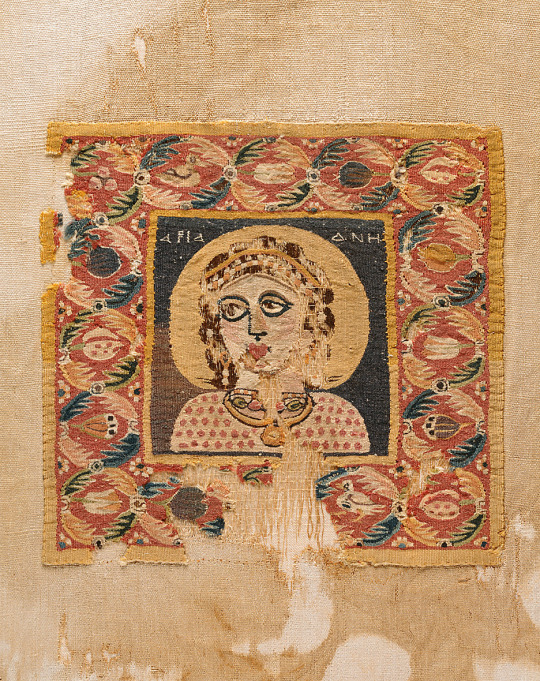

~ Ariadne and Dionysus.
Period: Late Roman/Late Antiquity
Date: A.D. 3rd-5th century
Place of origin: Achmim, Egypt
Medium: Wool on linen, colored knitting
#ancient#ancient art#history#museum#archeology#ancient history#archaeology#wool#ariadne#Dionysus#Achmim#Egyptian#Egypt#ancient egypt#3rd century#5th century
759 notes
·
View notes
Photo

Kingdom of Italy in 480 AD
106 notes
·
View notes
Text
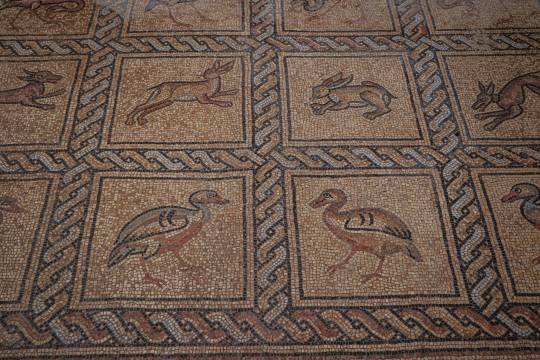



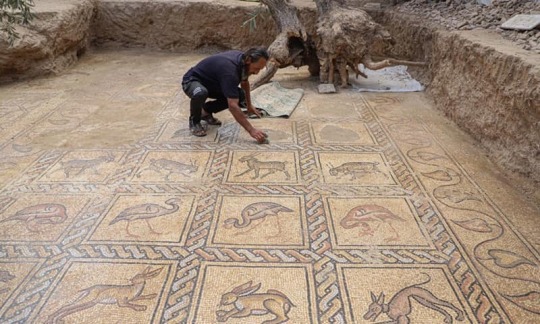
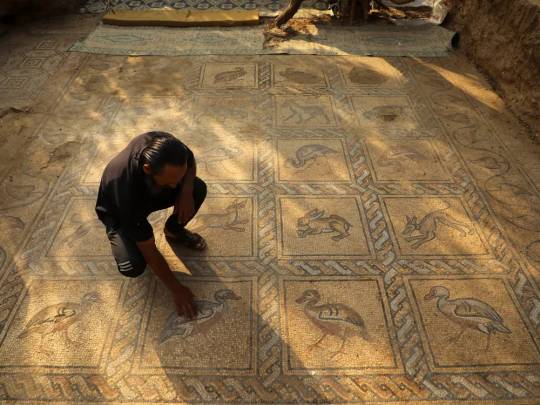
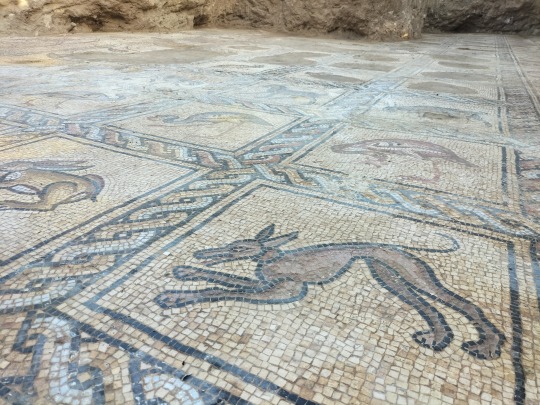
Byzantine Mosaic, Bureij refugee camp, Gaza Strip, Palestine,
5th to 7th centuries AD,
Salman al-Nabahin, a Palestinian farmer, unearthed the mosaic pavement, thought to date from the fifth to the seventh century AD, while working in his olive orchard in Bureij refugee camp, about half a mile from the border with Israel.
Trying to understand why some trees had not properly taken root, Nabahin said he and his son began digging. Then the son’s axe hit something hard and unfamiliar in appearance.
The Palestinian ministry of tourism and antiquities said the mosaic included several panels depicting animals and other features of social life during the Byzantine era, the continuation of the Roman empire in eastern provinces from the fifth century.
Gaza is rich in antiquities, having been an important trading spot for civilisations dating as far back as the ancient Egyptians and the Philistines depicted in the Bible, to the Roman empire and the Crusades from the 11th to the 13th centuries.
Several discoveries have been made in recent years. Due to a lack of funds and expertise, Gaza has usually invited international groups to help with the process of excavation and preservation.
#art#history#design#style#archeology#palestine#mosaic#gaza#gaza strip#5th century#7th century#refugee camp#byzantine#human history#free palestine#bureij#animals
102 notes
·
View notes
Text

Day 9: Celtic - Morgan le Fay; I realize that the runes are Germanic, but it’s a Green Knight reference 👀👀
#jenstober23#morgan le fay#the green knight#arthuriana#arthurian legend#celtic mythology#roman britain#celtic#5th century#6th century#briton tag#traditional art#history art#inktober#inktober 2023#drawtober#drawtober 2023#artober#artober 2023#witchtober#witchtober 2023#day 9
120 notes
·
View notes
Photo
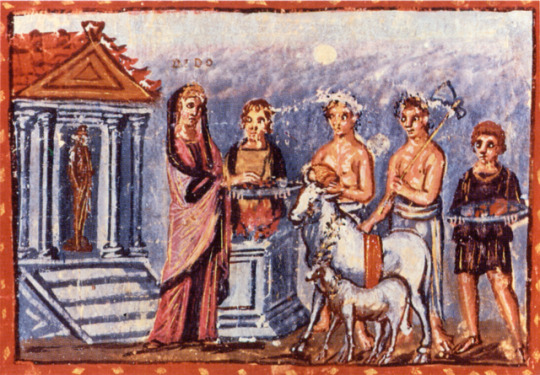

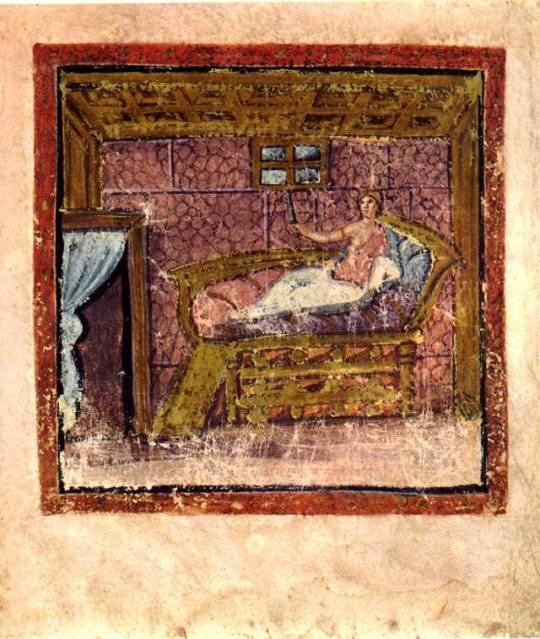
Vergil's Aeneid from the Vergilius Vaticanus illuminated manuscript kept in the collection of the Biblioteca apostolica Vaticana. MS lat. 3225. fol. 33 v; by the Master of the Vergilius Vaticanus; 5th century AD
#5th century#mdpearly#mdpancient#manuscript#illuminated manuscript#5th c. rome#rome#ancient rome#ancient manuscript
46 notes
·
View notes
Text

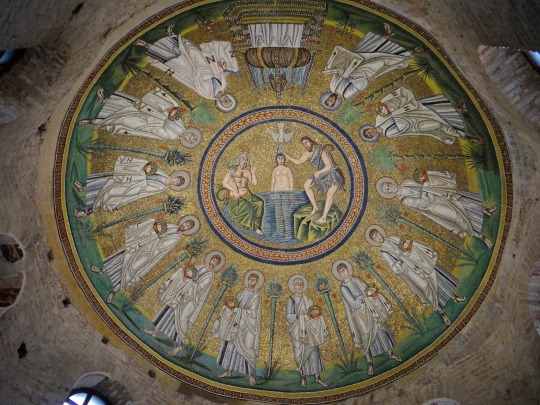
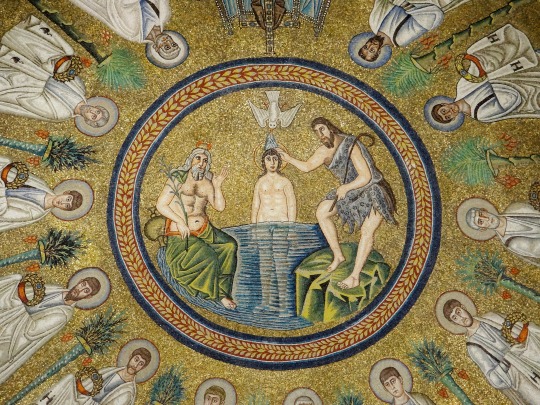
The Battistero degli Ariani (Baptistery of the Arians). It was built around the end of the 5th century by King Theodoric the Great.
Ravenna, Italy
#ravenna#italy#italia#baptistery#original photography#photography#travel#photographers on tumblr#lensblr#architecture#historical architecture#5th century#theodoric the great#ostrogoths#early christianity#late antiquity#church#church architecture#wanderingjana
23 notes
·
View notes
Photo

Demon mask dated from the V century BC.
#demon mask#artifact#archeaology#anthropology#ethnology#arts#mask#5th century#Máscara de demonio datada a partir del siglo V a.C.
147 notes
·
View notes
Text
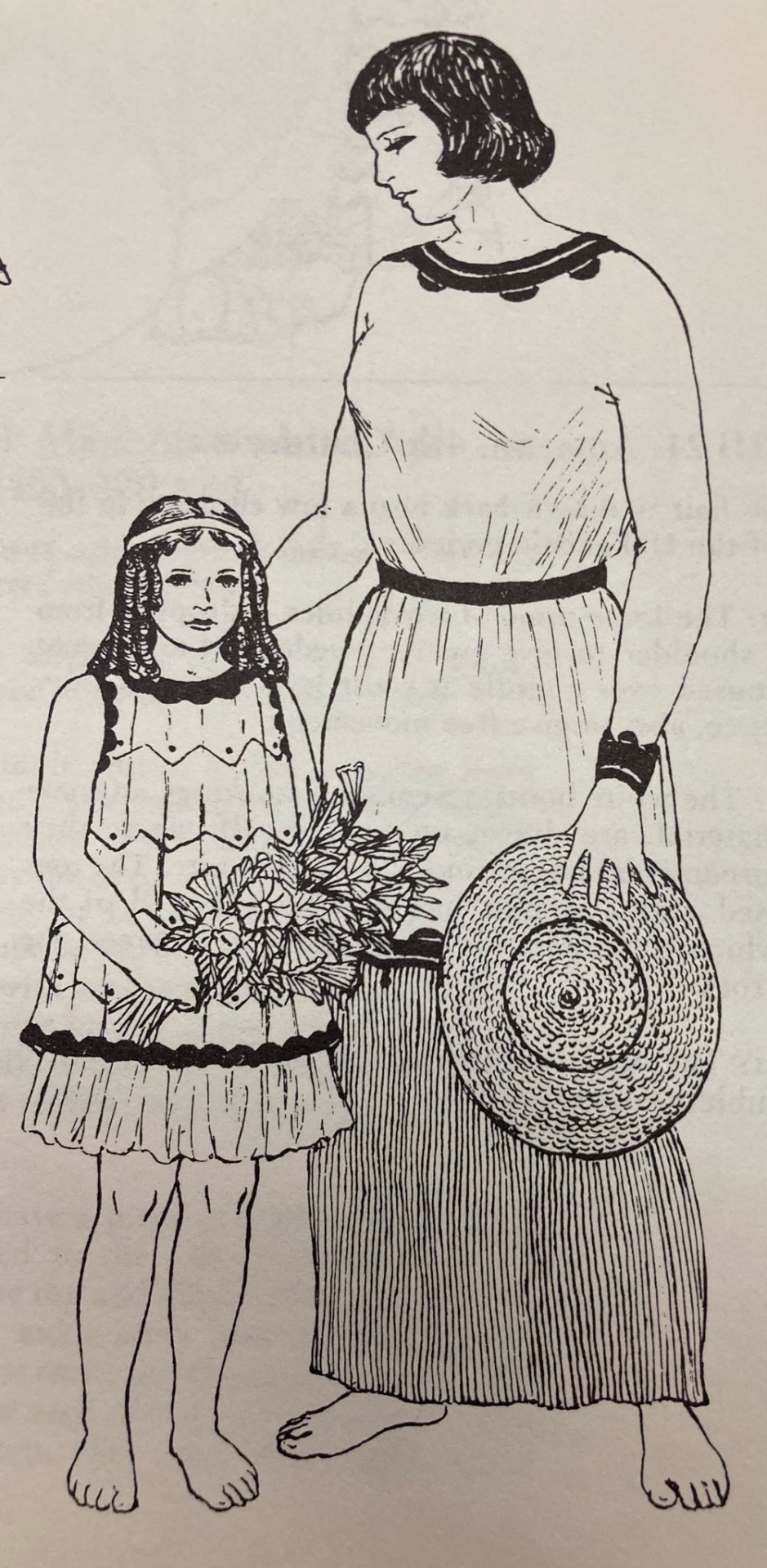

- Margot Lister, Costume
7 notes
·
View notes
Text
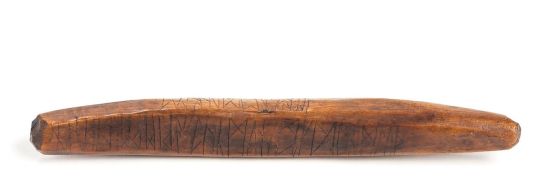
It's great to be able to show that runes were being carved in the Netherlands. This is one of the 23 currently known Frisian rune findings: the Westeremden (a location in the North-East of the Netherlands) yew stick, found in 1918 and dated 5th-8th century.
It can be seen in the Groninger Museum.
Made of Yew (Dutch: Taxus, or IJf) which is not a tree that generally could be found in this area. The inscription reads like a blessing or spell for luck/happiness. To me, this is Frisian galðr:
ophæmujiBAdaæmluþ
wimœBæhþuSA
iwioKuPdunale:
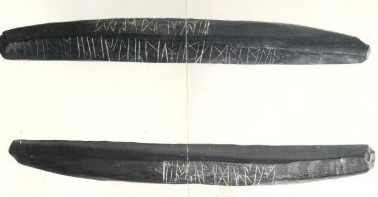

(Source: de Gruyter.)
Elmar Seebold (in 1990) reads:
ophæmu givëda æmluþ:
iwi ok upduna (a)le
wimôv æh þusë
Tineke Looijenga (in 1997) reads:
op hæmu jibada æmluþ :
iwi ok up duna (a)le
wimœd æh þusa
(Source)
Interpreted as something like:
luck (amluþ) stays (gibada) at home (op hæmu);
and (ok) at the yew (iwi) may it grow (ale) on the hill (up duna);
Wimœd has (æh) this (þusa)
Modern Frisians translate it into:
op de boerderij (heem) blijft voorspoed;
laat het groeien bij de ijf (taxus) op de terp;
dit is (eigendom) van Wimoed
(Source.)
Interestingly, this 5th-8th century Frisian Futhorc differs slightly from the more commonly known elder Futhark. (Context: the Elder Futhark in the Scandinavian areas transitioned towards the Younger Futhark in the 7th-8th century).
Here are a few interpretations by different writers:

By Parsons.

By Grimmsma.

By Terpen en Wierdenland.
#frisian futhorc#rune#yew#Amulet#galðr#groningen#netherlands#futhorc#5th century#6th century#7th century#8th century#northern iron age#Frisia#dutch
34 notes
·
View notes
Text
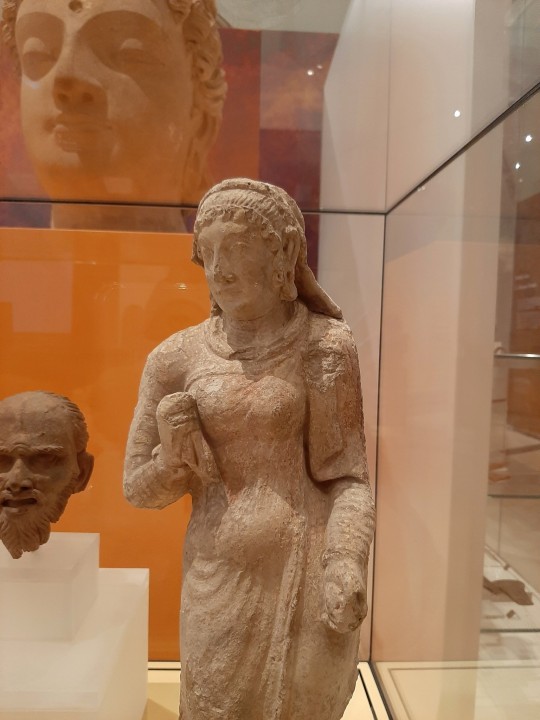
Standing woman
Gandhara, Afghanistan
Painted stucco
Kushan period, 4th-5th century
#can't believe i got to see her irl after i posted her like last year#she's bigger than i expected#women#gandhara#Afghanistan#mine#stucco#kushan#4th century#5th century#sculpture
36 notes
·
View notes
Photo

Sophia Myles as Isolde in ‘Tristan + Isolde’ (Film, 2006).
#sophia myles#isolde#tristan and isolde#perioddramaedit#fashion#blonde hair#blue eyes#5th century#Maurizio Millenotti
165 notes
·
View notes
Text


~ Pendant in the Form of a Figure.
Culture: Tiwanaku
Place of origin: Peru
Date: A.D. 400–800
Medium: Shell, stone, silver, copper, and cotton
#ancient#ancient art#history#museum#archeology#archaeology#ancient history#5th century#9th century#pendant in the form of a figure#figure#peru#peruvian#south america#tiwanaku#a.d. 400#a.d. 800
1K notes
·
View notes
Photo

The installation of the Vandals in Roman Africa
“La fin d’un empire”, Claire Sotinel, Belin, 2019
by cartesdhistoire
With Gaiseric, their king since 428, the Vandals, the last hostile barbarian group, entered Africa in order to find a rich territory, sufficiently away from the imperial armies to be able to live there in complete independence: in May 429 their army of several thousand men, accompanied by their families, crossed the Strait of Gibraltar. They progressed towards the east over 2000 km, sweeping away the Roman troops and leaving the memory of a particularly murderous expedition. For Rome, losing Africa means losing the richest province in the West and the City's source of supply. But the counter-offensives did not make it possible to defeat the Vandals even if the siege of Hippo between June 430 and August 431, during which its bishop Saint Augustine died, ended in a failure for the barbarians.
Faced with millions of African Romans, the Vandals were few in number (less than 100,000) but they were invaders who had little interest in signing a fetus with Rome. Finally, the latter was still signed on February 11, 435; the Vandals received land around Hippo while the Romans kept the largest part of Africa, the most urbanized and the richest. But Gaiseric, converted to Arianism, went beyond his status as federated king by adopting an anti-Catholic and anti-Roman aristocratic policy: in addition to the destruction of churches, expulsions and executions of clerics, was added the confiscation of ecclesiastical or senatorial lands for transform the Proconsular into an area of Vandal settlement and Arian religion.
On October 19, 439, Gaiseric took Carthage by surprise and then occupied Byzacene and Tripolitania. Rome negotiated in 442: the Vandals occupied proconsular Africa, Byzacene and the eastern part of Numidia while the king agreed to deliver grain to supply Rome. He respected this treaty for 20 years but the loss of Africa was no less a disaster for Rome.
76 notes
·
View notes
Text




Pyxis, Etruscan, 7th-5th century,
Greek · Attic, 5th century B.C.
Molded in the form of a ram’s head, the muzzle black-glazed, with reserved areas along the grooves at the end of the nose, the nostrils and the mouth, the bulging eyes in added white, with thick molded lids, the fleece composed of a series of tiny raised pellets, the underslung horns ribbed, the black-glazed ears emerging from within, wisps along the forehead in dilute glaze
The bowl with the goddess Aphrodite enthroned on a klismos, her right elbow leaning on the back of her chair, her left forearm resting on her leg, a dove standing on the chair beside her, her winged son Eros standing with a fan behind her, a draped female standing before her, wearing a rayed diadem, presenting her with an alabastron in her extended right hand, her drapery held up in her left, Ares further to the right, depicted nude but for a himation pinned at his neck, his dagger secured by a baldric, spears in his left hand, a draped female before him with a phiale in her extended left hand; palmettes on either side of the handle, with two dotted circles in between
The vessel perforated at the ram’s mouth.
Terracotta, L: 21 cm
Courtesy: Phoenix Ancient Art
#art#history#design#style#archeology#sculpture#antiquity#ram#terracotta#etruscan#ares#pyxis#aphrodite#klismos#7th century#5th century#greece
36 notes
·
View notes
Text
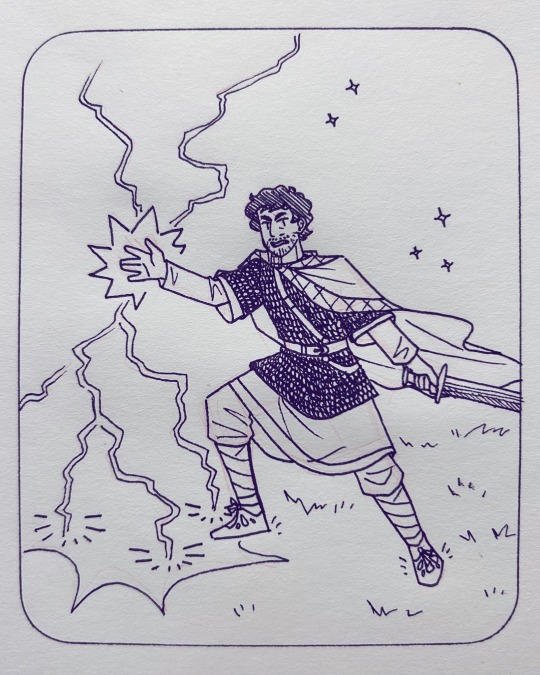
Day 16: Lightning - Alaric, king of the Visigoths!
#jenstober23#alaric the goth#king alaric#visigoths#sack of rome 410#roman history#history art#traditional art#5th century#goth tag#roman tag#inktober#inktober 2023#drawtober#drawtober 2023#artober#artober 2023#witchtober#witchtober 2023#lightning#day 16
7 notes
·
View notes
Photo
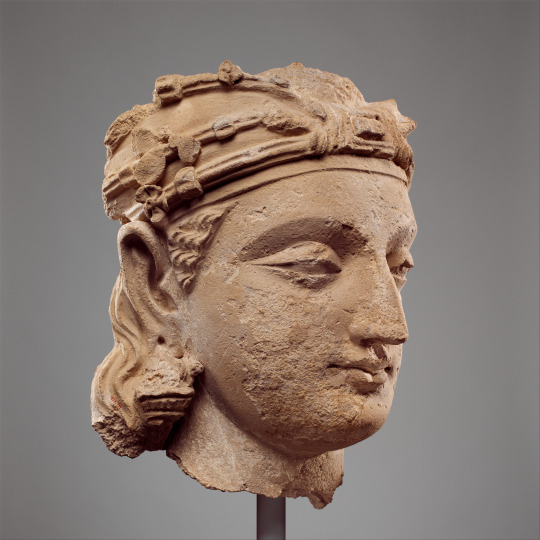
Monumental Bodhisattva Head, 5th century
Pakistan (ancient region of Gandhara)
Stucco
H. 19 3/4 in. (50.2 cm); W. 10 in. (25.4 cm); D. 10 in. (25.4 cm)
This head comes from a sculpture that would have been more than twelve feet tall and likely stood along the perimeter of a Buddhist sacred area enclosing a stupa. By the fourth and fifth centuries monumental imagery became increasingly popular in Gandhara and was almost exclusively restricted to images of the Buddha. The bodhisattva’s turban and jewelry might indicate that he is a rare image of Shakyamuni prior to enlightenment. Alternatively, the bodhisattva may have attended the Buddha as part of a massive triad.
Collection of the Metropolitan Museum of Art
#stucco#sculpture#Pakistan#Gandhara#Buddhism#bodhisattva#figure#cultural amalgam#5th century#art#art history#The Met#Metropolitan Museum of Art
16 notes
·
View notes